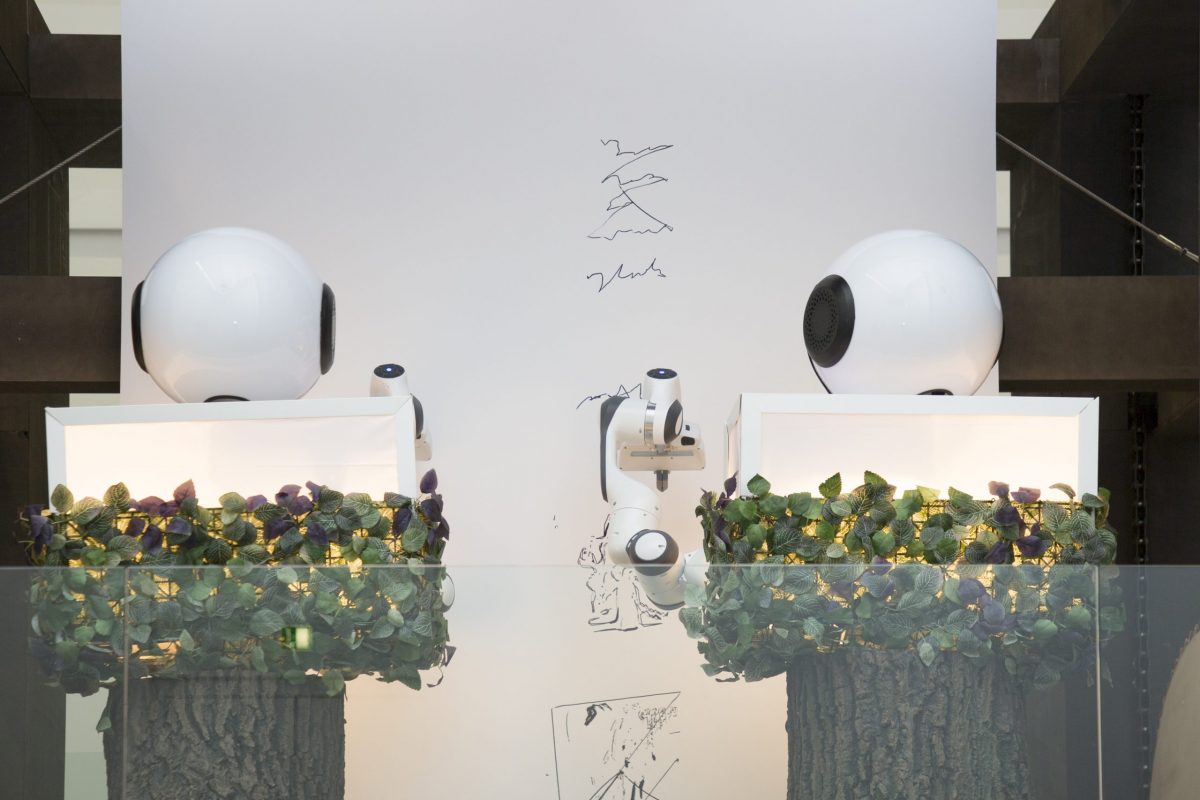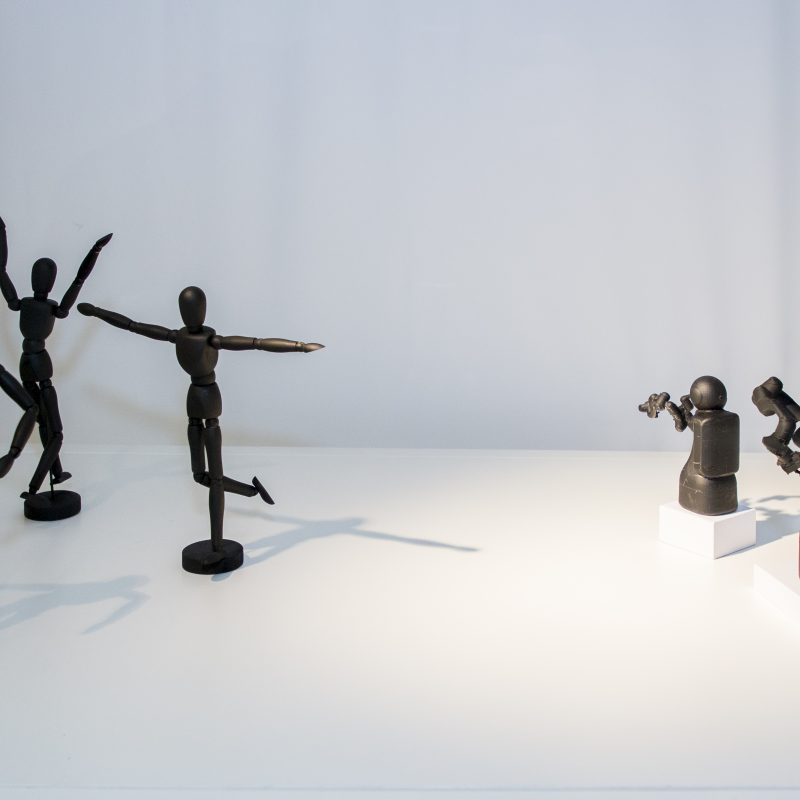ABOUT THE EXHIBITION
With Sami Haddadin one of the worldwide leading researchers, innovators and eminent authority in the field of robotics and artificial Intelligence (AI) continues the series of contemporary design positions in the Paternoster Hall, to which Die Neue Sammlung – The Design Museum has been inviting international protagonists of design every year since 2015.
Robotics and artificial intelligence are current topics that pose great hopes but also challenges to our times and society in the era of digital transformation. In the field of design, too, we can expect innumerable new tasks to arise in the formation of processes and products.
Sami Haddadin and his team have devised an exhibition for Die Neue Sammlung that in four chapters illustrates the emergence, present, and future of robotics and AI, enabling visitors to experience them.
Chapter I addresses the history of AI from its beginnings as an idea to Leibniz’ calculating machine through to intelligent robots and algorithms today.
Chapter II presents a dystopian vision around the future of AI applications and the way AI develops if it is understood as purely a data-hungry, omniscient, and analyzing digital technology. By way of example, surveillance using facial recognition and personality change is demonstrated. These scenarios may become reality if human beings and the benefits for humans are not placed at the center of technological development.
In contrast to this, Chapter III shows the link between humans and machines. It is based on the concept of embodied AI, i.e., artificial intelligence in a complex body that develops from the model and the understanding of the human body and its mind, instead of AI as an approach based purely on data analysis. At the end of this development lies a symbiosis of human and machine.

The final Chapter IV constitutes the heart of the exhibition: the ever first human-collective-controlled machine in the Paternoster Hall. For this purpose, the Paternoster lifts are integrated into a machine extended by interconnected robots controlled by humans, creating a seemingly endless document. Here, the robots are given instructions by visitors both on-site as well as via the App Collective Human Machine from outside the exhibition. Hence, AI can be used to present an exemplary physical depiction of the mental state of a society. In order to publicize the controls via the app within the digital space, at the start of the exhibition, a series of internationally well-known figures from the fields of research, culture, and media are invited to send their instructions and ideas to the machine.
Sami Haddadin himself had this to say: “Intelligent robots are assistants to human beings and it will stay that way for a long time. Anything else is science fiction, albeit, an inspiring and fascinating one.” After all, during the development process of AI, human beings will always play a formative role in its tasks and ways of working.
In the course of the exhibition, a catalog will be developed, which will also document the progression of the human-machine during the exhibition. There will also be a varied accompanying program with workshops for different age groups and presentations.
Main Sponsors:
PIN. Freunde der Pinakothek der Moderne e.V.
PICTET
FRANKA EMIKA
Exhibition Partner
SIEMENS
Sponsors:
Infineon
SAP
TQ
Supported by:
THK
BMW Group
Planning your visit
Open today till 6.00 pm
Daily 10.00 – 18.00
Thursday 10.00 – 20.00
Monday closed
Barer Straße 40
80333 München
Sunday admission 1€
Thursday – Saturday 10€
reduced 7€
Day pass (Alte Pinakothek, Pinakothek der Moderne, Museum Brandhorst, Sammlung Schack) 12€





